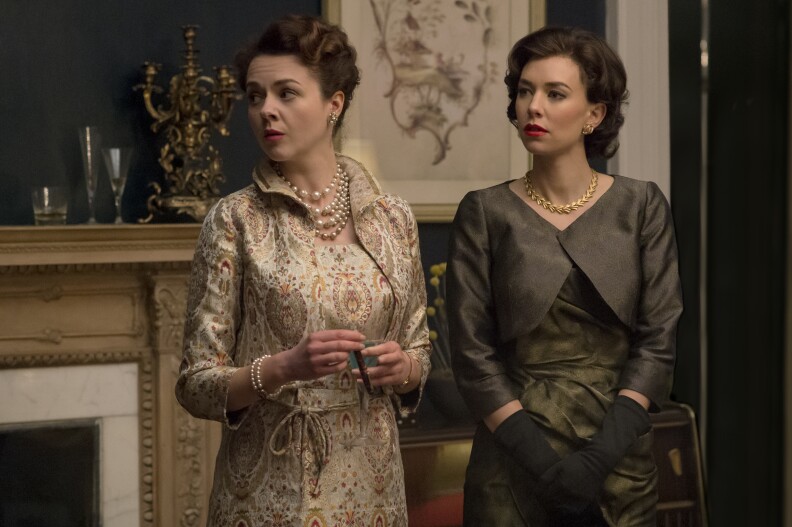There’s a lot to like about the Netflix’s “The Crown," which is all about the reign of Queen Elizabeth II, played by Claire Foy.
There are plenty of political and personal crises, but there are also plenty of outstanding costumes – many of which are designed and built from scratch.
The costume designer for the second season of "The Crown" is Jane Petrie, who follows first season designer Michele Clapton. Petrie's credits include the acclaimed TV series 'Black Mirror' and the Carey Mulligan movie 'Suffragette.'
To successfully dress the stars of "The Crown," Petrie had to meticulously research the fashion and political climate of the late 1950s and early 1960s in Britain (as well as design a Royal Wedding dress.)
The Frame's John Horn spoke with Petrie recently about her design process. Angelenos will have a chance to see her work in person on May 12th in a new exhibit at the Paley Center in Beverly Hills called "The Crown: Imagining a royal world."
Interview Highlights
On what was happening in the early '60s design world that she wanted to highlight in the show:
We didn't want to change things too much for Elizabeth. She would be getting isolated from the people and separated from everything that was going on outside. And with Margaret what we wanted to see was that she was attracted like a magnet to the outside world and everything that was starting to happen with the rise of the counter culture in the early sixties. And I think that we worked really hard on the outside world on season 2. We dressed the crowd really carefully. We really tried to tell the story of all the rapid, rapid changes happening in post-war Britain at the end of austerity. Which went on right into the 50s. So we wanted to have that excitement of young people and the forward propulsion of the outside world.
On designing a royal wedding dress:
With Margaret's wedding dress, we tried to do an authentic replica. Because there were certain points in 'The Crown" where you kind of have to do that. That's the balancing act in the crown. It kind of was difficult. You've got moments in history that you're recreating with gowns that are incredible. You need to do that justice. But then you need to design your own and put them alongside those. So I didn't have total control of all the gowns. It could've not felt like a cohesive group because if I didn't manage to hit the mark then I didn't want weak patches. It was a little bit nerve-racking. Sometimes when you're doing the crown in moves so fast that you don't have a lot of time to panic and worry about what you're doing. You have to do it, you have to get it done, and you have to be decisive. It's all about having done the research.
On deciding when to go rogue instead of replicating history:
I realize I've experienced so many times now that if I've done my research and I know the world, and then I start telling our story, the ideas that come up don't even feel like ideas. It's instinct, it's not something that I shape and think oh I know, think really hard and get the absolute right pair of shoes. You just know what they are! You look at a room full of shoes and you know exactly the right ones because you've done your research. But you're still interpreting the period and the time for the narrative that we're following. If it's specifically 'The Crown' then that's kind of a different deal because everything has to be quite new and immaculate. You're doing realism in a very different way because the way that they live and the way that they're presented to the public is quite theatrical.
On her process of working with an actor:
My whole process is one of self-discovery with actors. I don't go in with too firm an idea because I can have loads and loads of ideas of what to do with a character before they're cast. Sometimes the director will cast somebody I hadn't imagined in the role at all. And that changes. You know your ideas pivot all the time.














